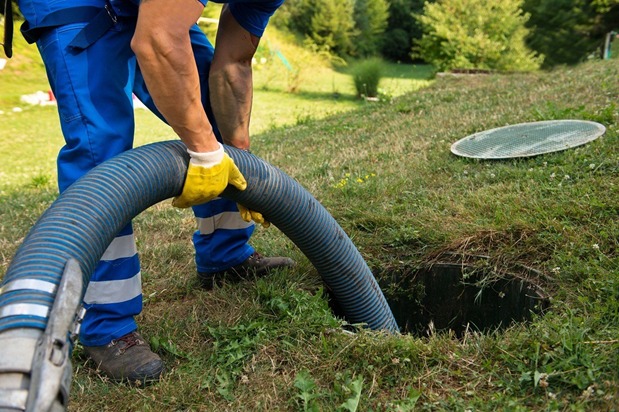Storm water drain maintenance is a critical aspect of urban infrastructure management. Properly functioning storm water drains prevent flooding, protect water quality, and ensure the safety of public spaces. Neglecting storm water drain cleaning can lead to blockages that cause water to back up, resulting in property damage, hazardous road conditions, and environmental harm.
Understanding the importance of regular storm water drain cleaning is essential for municipalities, businesses, and homeowners alike. A well-maintained drainage system efficiently directs rainwater away from streets, buildings, and landscapes, reducing the risk of erosion and structural damage. By prioritizing storm water drain maintenance, communities can mitigate the adverse effects of heavy rainfall and maintain a healthy, functional urban environment.
Identifying and Preventing Blockages
One of the primary challenges in storm water drain maintenance is identifying and preventing blockages. Blockages can significantly impair the efficiency of storm water drainage systems, leading to overflow, flooding, and potential damage to public and private properties. Understanding the common causes of blockages is the first step toward effective prevention and maintenance.
Common Causes of Storm Water Drain Blockages
Blockages in storm water drains can be caused by a variety of factors, including:
- Debris Accumulation: Leaves, twigs, and other organic matter can accumulate in drains, especially during the fall and after storms.
- Litter and Waste: Improper disposal of trash, plastic bags, and other waste materials can clog drains.
- Sediment Buildup: Over time, soil, sand, and other sediments can settle in the drains, reducing their capacity to channel water.
- Vegetation Growth: Roots from nearby trees and plants can infiltrate drainage systems, causing blockages and structural damage.
Tips for Preventing Blockages
Preventing blockages is a proactive approach that can save time, money, and resources in the long run. Here are some practical tips for preventing blockages in storm water drains:
- Regular Cleaning: Schedule regular storm water drain cleaning to remove accumulated debris and sediments.
- Proper Waste Disposal: Educate the community about the importance of proper waste disposal and the impact of littering on drainage systems.
- Leaf and Yard Waste Management: Encourage proper disposal of yard waste and the use of compost bins to prevent organic matter from entering the drains.
- Install Grates and Screens: Use grates and screens over drain openings to catch debris while allowing water to flow through.
- Monitor Vegetation: Regularly inspect and manage the growth of trees and plants near drainage systems to prevent root intrusion.
Regular Inspection Protocols
Regular inspections are essential for identifying potential blockages before they become major issues. Establish a routine inspection protocol that includes:
- Visual Inspections: Regularly check drain openings and visible sections of the drainage system for debris and blockages.
- Camera Inspections: Use CCTV cameras to inspect the interior of the drainage pipes, especially in areas prone to blockages.
- Scheduled Maintenance: Develop a maintenance schedule that includes periodic cleaning and inspections to ensure the system remains functional.
By identifying and preventing blockages through regular storm water drain cleaning and maintenance, communities can enhance the efficiency of their drainage systems, reduce the risk of flooding, and protect both property and the environment.
Step-by-Step Guide to Cleaning Storm Water Drains
Effective storm water drain cleaning is essential to ensure that the drainage system operates smoothly, especially during heavy rainfalls. Regular cleaning prevents blockages, reduces the risk of flooding, and maintains the overall health of the drainage infrastructure. Here’s a comprehensive step-by-step guide to cleaning storm water drains.
Tools and Materials Needed for Cleaning
Before starting the cleaning process, gather the necessary tools and materials:
- Protective Gear: Gloves, safety goggles, and waterproof boots
- Basic Cleaning Tools: Shovels, rakes, and brooms
- High-Pressure Washer: For removing stubborn debris and sediment
- Drain Rods: Flexible rods for dislodging blockages within pipes
- Trash Bags: For collecting and disposing of debris
- CCTV Camera: For inspecting the interior of the drains
Detailed Cleaning Procedure
- Preparation and Safety Measures
- Assess the Area: Inspect the drain area to identify the type and amount of debris present.
- Safety First: Wear protective gear to safeguard against potential hazards like sharp objects or contaminated water.
- Removing Surface Debris
- Clear the Grate: Remove the grate covering the drain and clean off any debris collected on it.
- Surface Cleaning: Use shovels, rakes, and brooms to clear leaves, litter, and other debris from the drain’s surface.
- Clearing the Drain Interior
- Manual Cleaning: Use drain rods to manually remove blockages from within the drain pipes. Insert the rods into the drain and twist them to dislodge any obstructions.
- High-Pressure Washing: Employ a high-pressure washer to clean the interior of the drain pipes. This method is effective for removing sediment and smaller debris.
- Inspection and Verification
- Visual Inspection: After cleaning, visually inspect the drain to ensure all debris has been removed.
- CCTV Inspection: Use a CCTV camera to inspect the inside of the pipes, especially in areas that are difficult to access. This step helps verify that the drain is clear and functioning properly.
- Final Steps and Maintenance
- Replace the Grate: Once the cleaning is complete, securely replace the drain grate.
- Disposal of Debris: Collect all debris in trash bags and dispose of it properly, following local waste disposal regulations.
Safety Precautions and Best Practices
- Work with a Partner: Always have someone with you during the cleaning process for safety and assistance.
- Be Aware of Hazards: Watch out for hazardous materials like sharp objects, toxic substances, and contaminated water.
- Follow Local Regulations: Ensure compliance with local regulations regarding storm water drain cleaning and waste disposal.
By following this step-by-step guide, you can effectively clean storm water drains, ensuring their optimal performance and longevity. Regular maintenance and thorough cleaning are key to preventing blockages and protecting your community from the adverse effects of inadequate drainage.
Routine Maintenance and Inspection
Routine maintenance and inspection of storm water drains are crucial to keeping the drainage system in optimal condition. Regular checks and upkeep can prevent minor issues from escalating into significant problems, ensuring the system functions efficiently during heavy rainfalls. Here’s how to create and implement an effective maintenance and inspection plan.
Importance of Regular Maintenance
Regular maintenance of storm water drains offers several benefits, including:
- Prevention of Blockages: Routine cleaning helps prevent the accumulation of debris that can lead to blockages and flooding.
- Extended Lifespan: Consistent upkeep extends the life of the drainage infrastructure, reducing the need for costly repairs or replacements.
- Environmental Protection: Properly maintained drains prevent contaminants from entering local waterways, protecting the environment and public health.
Creating a Maintenance Schedule
Developing a maintenance schedule ensures that storm water drains are inspected and cleaned at appropriate intervals. Here’s how to establish an effective schedule:
- Assess Local Conditions: Consider the local climate, vegetation, and the amount of foot and vehicle traffic in the area. Areas with heavy rainfall, abundant foliage, or high traffic may require more frequent maintenance.
- Seasonal Maintenance: Plan for seasonal cleanings, particularly before and after the rainy season, to ensure drains are clear and ready to handle increased water flow.
- Regular Inspections: Schedule monthly or quarterly inspections to check for debris accumulation, structural damage, and other potential issues.
How to Conduct Thorough Inspections
Thorough inspections are a critical component of routine maintenance. Here’s a step-by-step approach to conducting effective inspections:
- Surface Inspection: Begin with a visual inspection of the drain’s surface. Check for visible debris, litter, and signs of blockages around the drain opening.
- Grate and Inlet Check: Remove the grate covering the drain and inspect the inlet for debris and sediment buildup. Clean the grate and inlet area as needed.
- Interior Inspection: Use a flashlight and, if available, a CCTV camera to inspect the interior of the drain pipes. Look for blockages, cracks, root intrusions, and other signs of damage.
- Structural Assessment: Examine the structural integrity of the drain components, including the grate, inlet, and surrounding pavement. Address any signs of wear and tear promptly.
Maintenance Best Practices
Adopting best practices in maintenance ensures that storm water drains remain functional and efficient:
- Use Proper Tools: Equip maintenance teams with the right tools, such as drain rods, high-pressure washers, and protective gear, to perform effective cleanings and inspections.
- Document Findings: Keep detailed records of inspection findings, maintenance activities, and any repairs conducted. This documentation helps track the drain’s condition over time and informs future maintenance efforts.
- Engage the Community: Educate the community about the importance of keeping drains clear of debris. Encourage residents and businesses to avoid littering and properly dispose of yard waste and other materials.
By implementing a routine maintenance and inspection plan, you can ensure that storm water drains remain in good working condition, effectively preventing blockages and minimizing the risk of flooding. Regular attention to these systems is essential for maintaining public safety and protecting the environment.
Professional Services and When to Call an Expert
While regular maintenance and cleaning can often be handled by homeowners or local maintenance teams, there are situations where the expertise of a professional service is indispensable. Knowing when to call an expert for storm water drain cleaning and maintenance can save time, prevent extensive damage, and ensure the job is done correctly and safely.
When to Seek Professional Help
Certain scenarios necessitate the intervention of professional storm water drain cleaning services:
- Severe Blockages: If a blockage is too severe to be cleared with basic tools and methods, a professional with specialized equipment may be required.
- Recurring Issues: Persistent or recurring blockages and drainage problems may indicate a more serious underlying issue that requires professional assessment and repair.
- Complex Systems: Large, complex drainage systems, such as those in commercial or industrial areas, often need professional maintenance due to their scale and intricacy.
- Structural Damage: Signs of structural damage, such as cracks, sagging, or collapse of drain components, warrant immediate professional attention to prevent further deterioration and costly repairs.
Benefits of Hiring Professionals
Engaging professional storm water drain cleaning services offers several advantages:
- Expertise and Experience: Professionals have the training and experience to handle various drainage issues effectively. They can identify and address problems that may not be apparent to the untrained eye.
- Specialized Equipment: Professional services utilize advanced tools and technology, such as high-pressure jetting machines, CCTV inspection cameras, and root cutting equipment, to ensure thorough cleaning and precise diagnostics.
- Safety: Trained professionals follow stringent safety protocols, minimizing the risk of accidents and exposure to hazardous materials during the cleaning process.
- Comprehensive Solutions: Professionals provide comprehensive solutions, including cleaning, repair, and preventive maintenance, ensuring the long-term functionality of the drainage system.
How to Choose a Reliable Storm Water Drain Cleaning Service
Selecting a reliable professional service is crucial for effective storm water drain maintenance. Here are some tips to help you make an informed choice:
- Check Credentials: Ensure the service provider is licensed, insured, and certified to perform storm water drain cleaning and maintenance.
- Read Reviews: Look for reviews and testimonials from previous clients to gauge the quality and reliability of the service.
- Get Multiple Quotes: Obtain quotes from several providers to compare prices and services. Be wary of significantly low quotes, which may indicate subpar service.
- Ask About Experience: Choose a provider with extensive experience in handling storm water drainage systems similar to yours.
- Inquire About Services: Ensure the provider offers a full range of services, including inspection, cleaning, repair, and maintenance.
By recognizing the signs that necessitate professional intervention and knowing how to choose a reputable service provider, you can ensure that your storm water drainage system receives the expert care it needs. This proactive approach helps maintain the efficiency and longevity of the drainage system, protecting your property and the environment from the adverse effects of poor drainage.
Conclusion
Effective maintenance and cleaning of storm water drains are essential for preventing flooding, protecting property, and maintaining public safety. By understanding the importance of regular upkeep, identifying and preventing blockages, following a detailed cleaning procedure, and conducting routine inspections, communities can ensure their drainage systems operate efficiently.
In addition to maintaining drains, it’s crucial to address the condition of your property’s roof. Roof maintenance and repairs can prevent water from entering your home, which can cause significant damage to both your roof and drainage systems.
While many maintenance tasks can be handled independently, there are times when professional expertise is necessary to address more complex or severe issues. Engaging a reliable storm water drain cleaning service can provide comprehensive solutions and peace of mind, ensuring that the drainage infrastructure remains in optimal condition.
By prioritizing storm water drain cleaning and roof maintenance, municipalities, businesses, and homeowners can protect their investments, enhance environmental health, and foster safer, more resilient communities.
Keep an eye for more news & updates on DiscoverTribune.org!




